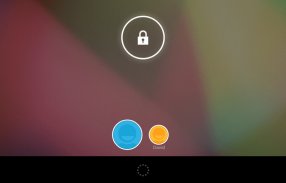Google Android 4.2 tablet review

Android 4.2.2 "Jelly Bean" is Google's latest refinement of what is now the world's most popular OS on new smartphones. For now, you can only get Android 4.2.2 on a few devices, including the Google Nexus 4 phone, and the Google Nexus 7 and Nexus 10 tablets. It's also rolling out to existing Galaxy Nexus owners, and the newly announced Samsung Galaxy S4 will have it at launch. There's nothing revolutionary about Android 4.2.2, but there are enough significant updates to cement Jelly Bean's Editors' Choice status for mobile smartphone operating systems.
User Interface Improvements
For this review, I tested Android 4.2.2 on a Google Nexus 4. As was the case with Android 4.1, the setup process is smooth, and faster than it is with earlier Android phones. Most of the default options were already checked, for example, and I had no problem adding my existing Google account. Once you're in, the OS walks you along with a series of translucent tip screens that appear over the home screen and main menu. This hand-holding is definitely helpful if you're new to the OS, though experienced users will already know many of the tips.
As we found when first testing Android 4.1, there's more going on here than just minor UI refinements. At Google I/O last year, Google engineering director David Burke talked about Project Butter, which was the company's effort to improve Android performance enough that it feels "buttery" smooth in use. This effort affected many aspects of the OS, such as improved vsync timing for faster frame rates on the display itself, triple graphics buffering for preventing dropped frames in video games, and improved overall touch-screen response.
In practice, there's definitely a noticeable improvement over, say, Android 4.0 "Ice Cream Sandwich." You can easily resize and move around icons and widgets on each home screen panel or delete apps by swiping the icon up, which causes it to disappear. The system font ("Roboto") already looked sharp and smooth before, and still does. But menu animations, finger swipes, and scrolling feel at least as solid as they do on iOS, if not better.
loading...
Keyboard, Web Browser, and Messaging
The predictive keyboard works well. I spent quite some time typing on it, and it seemed to do a much better job than before at guessing the word I meant, even whenever I typed several letters incorrectly. The prediction function works just as it does on Apple iOS 6.1, in that it can figure out what word you want to type even if your fingers are not hitting the on-screen keys directly, just by the grammar of your sentence and the built-in dictionary.
For the Swype-inclined, the new Gesture Typing feature attempts to mimic Swype, in that you can now draw out words by gliding your fingertip over each letter on the on-screen keyboard. Google also boosted the predictive text engine to allow for spaces between words, as well as boosting the dictionary the engine uses overall, both for voice dictation and typing.
In fact, Android 4.2.2's predictive text engine also tops that of iOS, in that it still shows the bar beneath the text window with possible alternatives—rather than just one the way the iPhone does—and then pops it in with a little animated fade as you continue typing. These are small details, but they're beautiful in action. This is exactly the kind of polish Android needed all along, though the new BlackBerry Z10 on-screen keyboard has turned out to be even better.
The Web browser offers smooth handling of multiple tabs, which you can swipe among on a separate screen. One issue; while auto-rotate is switched off by default, when I turned it on, I noticed some pages had trouble formatting columns of text when flipping between landscape and portrait mode. In other words, the screen would be formatted correctly in one orientation, but then end up with a thin column and lots of white space in the other.
Adobe has officially dropped support for Flash starting with Jelly Bean 4.1. This doesn't bother me as much as it irks others. Even when it works on mobile devices, it doesn't really work all that well. The end of Flash for Android is hardly a surprise, at any rate, as Adobe said months ago it was discontinuing all mobile Flash development.
In the messaging app, tap the new message icon, and it pops up names and photos from your contact list as you type letters, including alternate phone numbers indented slightly as compared with the main one. I tested this function with a book of about 1, 500 contacts and it was super fast.
Back to topSource: www.pcmag.com
|
Zikee MacBook Air/MacBook Pro 13 13.3" inch Sleeve Case Cover Shell Protective Skin with handle and pockets - Water resistant PU leather Notebook Computer Briefcase Carrying Bag (Black) Personal Computer (Zikee)
|
|
RBSCH 2016 NEW M8R Android 5.1 RK3368 RockChip Octa Core 2GB/8GB 4K Bluetooth 4.0 Kodi fully loaded Ethernet 1000M/LAN DUAL Band WIFI android Smart TV BOX CE (RBSCH)
|






